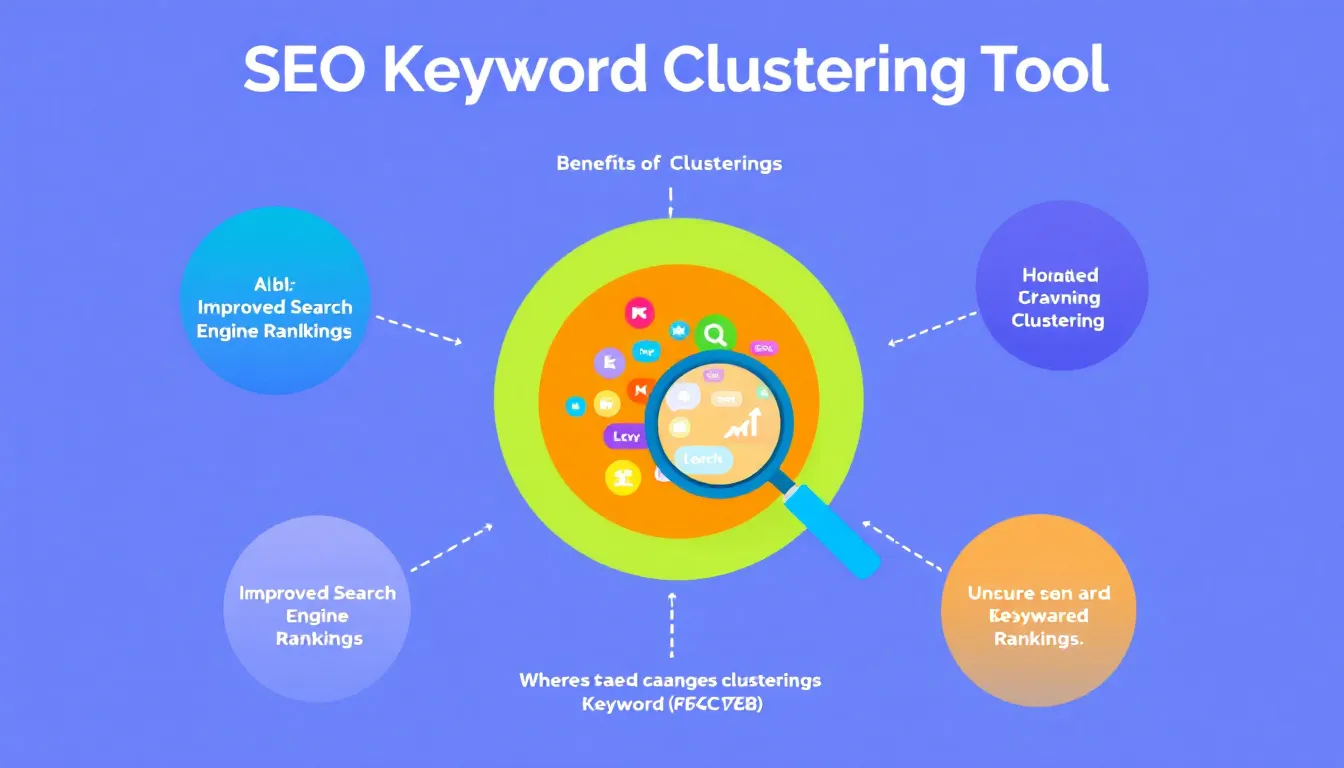SEO Keyword Clustering Tool
Is this tool helpful?
How to Use the SEO Keyword Clustering Tool Effectively
Follow these simple steps to get the most out of the Keyword Clustering Tool:
- Enter your main topic: Provide the core subject you want to research. For example, “Renewable Energy Technologies” or “Digital Marketing Strategies”.
-
Add additional context (optional): Specify any special focus or requirements to refine your keyword research. Examples include:
- Focus on residential solar panel installations
- Include tactics for small business social media campaigns
- Generate keyword clusters: Click the “Generate Keyword Clusters” button to start the process.
- Review the results: The tool displays organized keyword groups related to your main topic.
- Copy and use the clusters: Use the provided option to copy keyword clusters and implement them in your content strategy for better SEO performance.
What Is the SEO Keyword Clustering Tool and Why Use It?
The SEO Keyword Clustering Tool groups related keywords into clusters based on their semantic connections. This helps you create content that covers broader topics with clear structure, improving your website’s search engine rankings and user engagement.
Keyword clustering reduces guesswork by organizing keywords around themes and user intent. It benefits content creators, SEO specialists, and digital marketers by streamlining keyword research and revealing valuable content opportunities.
Key Benefits of Using Keyword Clustering
- Save Time: Automate keyword grouping to speed up research and focus on content creation.
- Improve Content Structure: Build logical topic clusters and stronger internal linking.
- Boost SEO Ranking: Target comprehensive keyword sets to increase topical authority.
- Find Long-Tail Keywords: Discover lower-competition phrases with high conversion potential.
- Identify Content Gaps: Spot missing topics and expand your content offerings.
How Keyword Clustering Works
Keyword clustering analyzes semantic relationships between search terms by evaluating:
- Meaning and context of keywords
- User search intent—informational, transactional, or navigational
- Co-occurrence of keywords in search results
- Search volume and competition metrics
This tool uses natural language processing to group related keywords into clusters, helping you target multiple related search queries efficiently.
Practical Uses for the SEO Keyword Clustering Tool
Content Planning and Strategy Development
Organize your keyword clusters into content themes, which allows you to:
- Create pillar pages and related cluster content
- Develop editorial calendars based on well-structured topics
- Enhance user experience with clear navigation and hierarchy
E-commerce Site Optimization
Use keyword clusters to improve product categories and landing pages:
- Input your main product line: For instance, “Smart Home Devices”.
- Review clusters: Identify groups like “Voice-Controlled Lighting”, “Smart Thermostats”, and “Home Security Systems”.
- Optimize category pages: Align product pages with keyword clusters for better relevancy.
- Create targeted content: Add buying guides or product comparisons reflecting clustered keywords.
Local SEO and Service Business Enhancement
Improve local search rankings by clustering keywords with location-specific terms:
- Enter your service plus location: Example: “Landscaping Services in Seattle”.
- Analyze clusters: Find groups such as “Seattle Garden Design,” “Urban Lawn Care Seattle,” and “Seasonal Planting Seattle”.
- Refine service pages: Focus pages on clusters with location keywords for stronger local relevance.
- Create blog posts: Address neighborhood-specific tips or FAQs tied to keyword clusters.
Using Keyword Clusters to Avoid Keyword Cannibalization
When multiple pages target the same keywords, your rankings can suffer. Keyword clustering lets you identify overlapping topics and consolidate content effectively by:
- Recognizing overlapping keyword groups
- Combining related topics into comprehensive pages
- Planning clear content hierarchies and internal linking
For example, cluster keywords like “vegan recipes,” “plant-based meals,” and “vegetarian cooking” together to create a detailed guide instead of multiple competing posts.
FAQs About Keyword Clustering
How many keyword clusters should I create?
Aim for 5 to 10 clusters per topic, each containing 10 to 30 keywords, depending on your content strategy and topic scope.
How often should I update my keyword clusters?
Review and update clusters every 3 to 6 months to keep up with changing search trends and user behavior.
Can I use keyword clustering for PPC campaigns?
Yes. Clustering helps create targeted ad groups and landing pages that improve ad relevance and Quality Score.
How do I handle overlapping keyword clusters?
Address overlaps by:
- Creating broader pages covering multiple clusters
- Maintaining clear focus for separate pages
- Using internal links to connect related topics
Can keyword clustering improve voice search optimization?
Yes. Clustering questions and conversational phrases helps you target natural language queries common in voice searches.
Incorporating Keyword Clusters Into Your Content
To apply keyword clusters effectively, follow these steps:
- Audit your existing content against the new keyword clusters.
- Identify gaps or areas for content expansion.
- Update current pages with relevant keywords from clusters.
- Create new pages or sections to cover unmet subtopics.
- Use internal links to connect related content based on cluster relationships.
Keep your content natural and user-friendly while integrating keywords seamlessly for the best SEO results.
Important Disclaimer
The calculations, results, and content provided by our tools are not guaranteed to be accurate, complete, or reliable. Users are responsible for verifying and interpreting the results. Our content and tools may contain errors, biases, or inconsistencies. Do not enter personal data, sensitive information, or personally identifiable information in our web forms or tools. Such data entry violates our terms of service and may result in unauthorized disclosure to third parties. We reserve the right to save inputs and outputs from our tools for the purposes of error debugging, bias identification, and performance improvement. External companies providing AI models used in our tools may also save and process data in accordance with their own policies. By using our tools, you consent to this data collection and processing. We reserve the right to limit the usage of our tools based on current usability factors.







